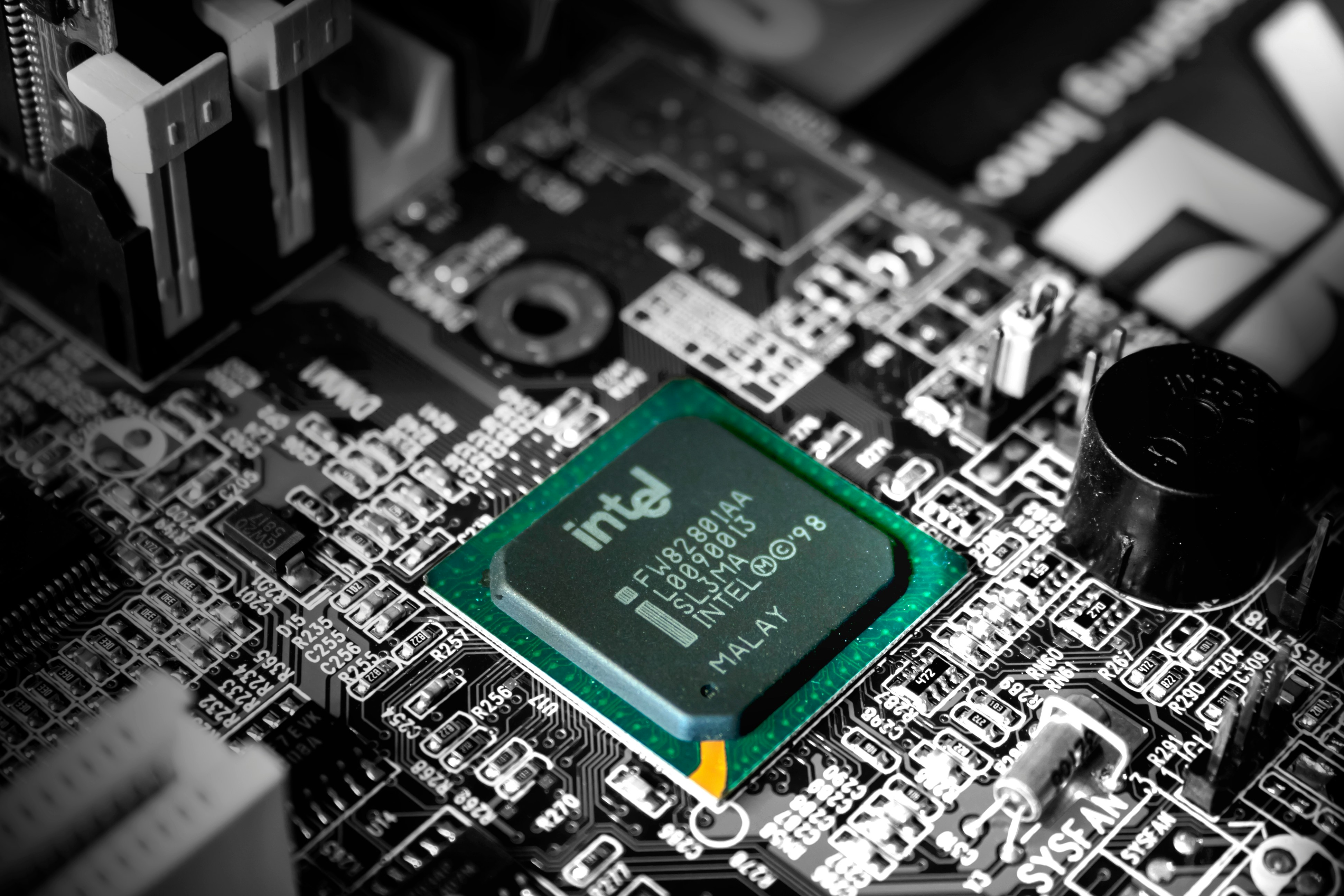
Semiconductor Predictions for the Next 5 Years: Technological Progress, Emerging Opportunities, and the Evolving Job Market
From smartphones and data centres to electric vehicles and advanced medical devices, semiconductors lie at the heart of almost every modern technological innovation. As emerging domains like artificial intelligence (AI), 5G/6G networks, edge computing, and quantum exploration push hardware capabilities to new frontiers, the global semiconductor industry is experiencing rapid change—and with it, a wealth of career opportunities. In the UK, a confluence of cutting-edge research, government initiatives, and industrial partnerships is fueling demand for semiconductor talent spanning design, manufacturing, test, software integration, and beyond.
But which semiconductor breakthroughs are most likely over the next half-decade, and how will they influence the job market? This in-depth article explores the key trends shaping the future, the technological progress set to redefine chip capabilities, and the job roles poised to be in highest demand. If you’re a job seeker or a professional eager to pivot into the semiconductor domain, read on to discover how to position yourself for success in an industry driving the next wave of global innovation.
1. Why Semiconductors Remain Critical to Technological Progress
1.1 An Essential Foundation for Digital Transformation
The modern digital economy relies on powerful, efficient chips to support:
High-Performance Computing (HPC): From simulating climate models to training AI systems, advanced processors enable complex workloads that were once unthinkable.
Edge and IoT: Billions of smart devices, wearables, or autonomous robots require optimised semiconductors for real-time data processing and low power consumption.
Networking and 5G: New communication standards push for better baseband processors, network-on-chip solutions, and radio frequency front-ends that handle ever-faster data rates.
Automotive Electronics: Electric vehicles, ADAS (Advanced Driver-Assistance Systems), and self-driving platforms demand specialised silicon for safety, reliability, and performance.
As these applications scale, the semiconductor industry must innovate across architectures, materials, and manufacturing techniques—opening pathways for skilled professionals to push technology forward.
1.2 Convergence with AI, Cloud, and Next-Gen Materials
Moore’s Law no longer delivers guaranteed performance leaps just by shrinking transistor nodes. Instead, the industry is pivoting to:
Domain-Specific Accelerators: Custom chips (GPUs, TPUs, FPGAs) optimised for machine learning, data analytics, or cryptographic tasks.
3D Packaging: Stacking dies (chiplets) in advanced packaging solutions to reduce latencies, increase density, and integrate heterogeneous functionalities.
Compound Semiconductors: Gallium nitride (GaN), silicon carbide (SiC), or other wide-bandgap materials enabling high-frequency or high-voltage electronics with smaller footprints and better energy efficiency.
Quantum Research: Though still in R&D, quantum computing necessitates novel chip designs, cryogenic electronics, and robust control systems.
These technology shifts underscore the need for multi-disciplinary semiconductor talent—from device physics and circuit design to advanced packaging and software integration.
1.3 UK’s Role in the Semiconductor Ecosystem
Though the UK doesn’t house many mega-fabs, it has a strong presence in:
R&D and Design: Many global chip design firms and leading academic institutions.
Specialised Manufacturing: High-value prototyping, packaging, or test lines for advanced or niche processes.
Start-Up Incubation: Government grants, seed funding, and academic spinouts focusing on novel architectures, AI chips, or quantum devices.
Supply Chain Partnerships: Collaborations bridging materials research, EDA (electronic design automation) software, or IP cores (e.g., Arm architecture).
These factors create diverse job opportunities for semiconductor professionals at every stage—from conceptual R&D to final product test and deployment.
2. Key Semiconductor Predictions for the Next Five Years
2.1 Advanced Nodes and Beyond 3nm
Prediction: As conventional silicon scaling approaches its physical limits, the industry will push to sub-3nm processes while exploring new transistor architectures.
Key Drivers
Performance Demands: HPC, AI inference/training, and real-time analytics requiring top-tier computational density.
Novel Device Structures: Gate-all-around (GAA) or nanosheet transistors, doping innovations, and potential breakthroughs in transistor electrostatics.
Rising Costs: Each next-generation node requires billions in R&D and factory retooling, pushing consortia and alliances to share risk.
Implications for Job Seekers
Process Integration Roles: Engineers bridging fundamental device physics with manufacturing constraints—optimising doping, lithography, or materials.
EDA Tool Specialists: Creating design software that handles more complex transistor layouts and advanced design rule checks (DRCs).
Supply Chain Management: Roles focusing on securing wafer capacity at advanced foundries, scheduling tape-outs, or navigating multi-sourcing strategies.
2.2 3D Packaging and Chiplet Architectures
Prediction: 3D packaging, multi-die integration, and chiplet-based designs will become standard for high-performance or domain-specific chips.
Key Drivers
Interconnect Bottlenecks: Squeezing more performance by stacking DRAM or logic dies vertically, reducing latencies and power consumption.
Custom Combinations: Assembling CPU, GPU, AI accelerators, and I/O blocks as separate chiplets—optimising yields, reusing IP blocks, or mixing different foundry processes.
Density Gains: Bypassing some node scaling issues with advanced packaging, bridging heterogeneous processes on the same package.
Implications for Job Seekers
Packaging Engineers: Knowledge of TSVs (through-silicon vias), micro bumps, fan-out wafer-level packaging, and thermal management.
Design-for-Packaging: Combining mechanical, thermal, and EDA skill sets to ensure chiplets interconnect efficiently.
Test and Yield Roles: Handling the complexity of multi-die testing or diagnosing package-level failures in advanced 3D stacks.
2.3 Domain-Specific Accelerators Proliferate
Prediction: With AI, 5G, automotive, and HPC workloads needing specialised hardware, domain-specific accelerators—be it AI NPUs, DSPs for telecom, or security enclaves—will spread across consumer and enterprise markets.
Key Drivers
AI at Scale: Training large language models or inference at the edge emphasising compute efficiency.
Tailored Solutions: Data centre operators or OEMs designing in-house accelerators for performance gains (e.g., Amazon’s Graviton, Google’s TPU).
Competitive Pressures: Start-ups capitalising on gaps in general-purpose CPU or GPU efficiency for specific tasks.
Implications for Job Seekers
SoC Architecture: Designing integrated systems that fuse CPU cores, custom accelerators, memory interfaces, and interconnect fabrics.
Hardware-Software Co-Design: Tuning compilers, libraries, or runtime frameworks for new instruction sets or memory hierarchies.
Algorithmic Understanding: Familiarity with neural network topologies, cryptographic ciphers, or real-time DSP workloads to guide hardware decisions.
2.4 Compound Semiconductors in Power and RF
Prediction: Materials like GaN, SiC, or advanced III-V compounds will become mainstream for power electronics, 5G/6G radio front-ends, or automotive inverters.
Key Drivers
Electrification: EVs requiring smaller, lighter, and more efficient power modules that handle high voltages.
High-Frequency: 5G NR and upcoming 6G bands demanding wide-bandgap transistors for low-loss, high-frequency amplification.
Thermal and Efficiency Gains: Lower conduction losses, better heat dissipation, leading to higher reliability in harsh conditions.
Implications for Job Seekers
Materials Science Roles: Mastering doping profiles, wafer bonding, or epitaxy for GaN/SiC devices.
Packaging and Reliability: Ensuring robust power modules, advanced cooling solutions, or high-voltage insulation.
Application Engineering: Showcasing domain know-how for EV powertrains, 5G base stations, or industrial motors.
2.5 Edge Computing Semiconductors
Prediction: As edge computing flourishes, specialised semiconductors—built for low-latency inference or on-site analytics—will proliferate.
Key Drivers
On-Device AI: Minimising data transfers, enabling real-time decisions in drones, manufacturing lines, or AR glasses.
Energy Constraints: Battery-operated sensors or robots requiring ultra-low-power microcontrollers or SoCs with integrated accelerators.
Rugged Environments: Chips designed for wide temperature ranges, vibrations, or moisture-laden contexts (farms, warehouses, vehicles).
Implications for Job Seekers
Low-Power Design: Engineers with expertise in power gating, dynamic voltage scaling, or hardware-software partitioning.
Embedded AI: Combining microcontrollers (MCUs) or digital signal processors (DSPs) with model compression or quantisation.
Edge Security: Ensuring hardware roots of trust, anti-tamper measures, or secure boot for distributed node deployments.
2.6 Open Chip Platforms and RISC-V Momentum
Prediction: Open-source hardware and RISC-V architectures will challenge incumbents, spurring custom solutions, flexible licensing, and more competition in the processor IP space.
Key Drivers
Licensing Costs and Control: Start-ups or OEMs seeking to avoid high IP fees from established vendors or to tailor CPU instruction sets to unique workloads.
Ecosystem Growth: RISC-V consortia, open EDA tools, or community-driven modules fueling robust software support and hardware expansions.
Government and University Backing: Funding open chip initiatives, fostering local innovation with fewer patent or licensing constraints.
Implications for Job Seekers
RISC-V / Open Hardware: Familiarity with open CPU cores, pipeline microarchitecture, or advanced vector extensions for AI.
Customization: Designing domain-specific instructions or co-processors around open ISA building blocks.
Toolchain Knowledge: Mastery of open EDA flows, debugging, or performance tuning for open-source SoC frameworks (e.g., Rocket Chip, BOOM, or proprietary expansions).
2.7 Sustainability and Circular Semiconductors
Prediction: Pressure to reduce environmental impact—energy usage in manufacturing, e-waste volumes, raw material scarcity—will drive sustainable design, recycling, and extended product lifecycles.
Key Drivers
Green Mandates: Corporate net-zero pledges, carbon taxes, or consumer demand for eco-friendly electronics.
Resource Constraints: Limited supplies of rare earth metals or advanced materials, pushing recycling or second-life strategies.
Regulatory Influence: Potential legislation requiring e-waste management, design-for-repair, or minimal environmental footprints.
Implications for Job Seekers
Eco-Conscious Design: Using life cycle analysis, selecting more recyclable materials, adopting modular approaches.
Refurbishment and Testing: Expanding roles in verifying older chips, recertifying second-hand boards, or creating closed-loop supply chains.
Process Efficiency: Pushing for leaner wafer processes, improved yields, or lower chemical usage in lithography steps.
3. Evolving Job Market for Semiconductors in the UK
3.1 In-Demand Roles
Reflecting the predicted trends, recruiters anticipate strong demand for:
Semiconductor Design Engineers: Crafting advanced SoCs, ASICs, or domain-specific accelerators with next-gen node knowledge.
EDA Tool Developers: Building or extending design, simulation, or verification software for sub-5nm complexities, 3D packaging, or RISC-V workflows.
Packaging and Test Engineers: Handling chiplet-based solutions, multi-die stacking, advanced materials, and final test yields.
Process Integration Specialists: Bridging device physics, doping profiles, and lithography steps for cutting-edge fabrication lines.
Power Electronics Experts: Working with GaN/SiC to enable EV components, industrial inverters, or advanced RF front-ends.
AI/ML Chip Architects: Designing or optimising hardware for neural networks, cryptographic accelerators, or HPC workloads.
Supply Chain and Product Managers: Overseeing wafer capacity, multi-foundry strategies, or product life cycles in a complex global environment.
3.2 Core Skills for Semiconductor Professionals
Technical:
Chip Design: Verilog/VHDL for RTL, place-and-route flows, timing closure, power optimisation.
Materials and Physics: Fundamentals of doping, transistor operation, reliability engineering, plus next-gen materials.
Test and Verification: SystemVerilog UVM, coverage metrics, automated test benches, hardware debugging.
Packaging: Knowledge of fan-out wafer-level packaging, TSV (through-silicon vias), and thermal design.
Software-Driven: Scripting (Python, Perl), build automation, DevOps for silicon (Git-based versioning, CI pipelines for design sign-off).
Soft Skills:
Collaboration: Working with cross-functional teams—process engineers, system architects, validation labs, marketing.
Problem-Solving: Diagnosing yield drops, performance bottlenecks, or design conflicts under production constraints.
Communication: Explaining complex chip solutions to non-technical stakeholders or bridging design & manufacturing teams.
Adaptability: Embracing new processes, advanced packaging leaps, or aggregator frameworks that unify software-hardware integration.
3.3 Certifications, Degrees, and Practical Exposure
Given the high-stakes nature of chip design and fabrication:
Formal Education: Undergraduate or Master’s in electrical engineering, materials science, physics, or related fields often essential.
PhD: Beneficial for advanced R&D roles, particularly in device physics, quantum computing, or novel materials.
Practical Projects: Contributing to open silicon design projects, or hands-on FPGA/ASIC design experiences, can demonstrate applied skills beyond academic theory.
3.4 Salary Trends and Career Progression
Semiconductor professionals, especially those in advanced node design or domain-specific accelerators, frequently earn salaries on par with top software roles—often surpassing £60k–£80k for mid-level, with lead or management positions reaching six figures. Career progression includes moving from design tasks to architecture, cross-functional leadership, or even establishing specialised semiconductor start-ups harnessing new IP or advanced packaging breakthroughs.
4. How to Position Yourself for Semiconductor Jobs
4.1 Master the Fundamentals
Electronics and Circuits: Refresh your knowledge of transistor operation, logic design, or basic VLSI.
EDA Tools: Familiarise yourself with industry-standard flows—Synopsys, Cadence, Mentor/Siemens, or open-source alternatives for simpler projects.
Programming: Scripting in Python or Perl for automation, plus strong C++ for EDA development or embedded driver work.
4.2 Choose a Speciality
Digital Design: Creating advanced SoCs, interfacing with memory or peripheral IP blocks, focusing on logical verification or DFT (design for test).
Analog/Mixed-Signal: Handling sensors, power regulators, RF front ends—niche fields with high demand.
Process Engineering: Focusing on doping, lithography, materials engineering at advanced nodes or compound semiconductors.
Packaging and Test: Leading complex multi-die 3D packaging or advanced wafer-level testing, ensuring yield and reliability.
4.3 Build Hands-On Experience
Projects or Internships: Chip design, verification labs, or practical microcontroller-based electronics. Some universities have tape-out programs or sponsor collaborative research.
Online Communities: Engaging with open hardware platforms (e.g., RISC-V designs), or contributing to open-source EDA tools or IP blocks.
Hackathons: FPGA-based contests or domain-specific events focusing on AI accelerators or IoT sensor solutions.
4.4 Keep Learning and Networking
Conferences: UK and global events (e.g., DATE, DAC, IEDM) highlight next-gen processes, packaging, or design strategies.
Local User Groups: Cadence or Synopsys user meetups, or academic seminars bridging advanced lithography or quantum device fabrication.
Professional Communities: LinkedIn groups, Slack/Discord channels, or local mentorship circles connecting professionals from design labs, foundries, and electronics OEMs.
5. Conclusion: Embracing the Next Era of Semiconductor Innovation
Semiconductors remain the driving force behind every wave of modern computing—from HPC and AI to 5G connectivity and immersive user experiences. Over the next five years, leaps in node scaling, 3D packaging, compound materials, domain-specific accelerators, and open-hardware initiatives will fuel the industry’s transformation, forging new ways to meet insatiable performance demands at manageable power footprints.
For job seekers, this translates to rich career pathways across:
Design: Crafting the next generation of SoCs or GPUs optimised for HPC, AI, or edge computing.
Process and Manufacturing: Advancing frontiers of lithography, doping, and yield management at sub-3nm or emerging transistor architectures.
Packaging and Test: Overseeing multi-die integrations, refining reliability, minimising thermal or mechanical stresses in dense 3D stacks.
Software Integration: EDA tool development, hardware-software co-design, or agile DevOps bridging code generation with silicon verification.
Supply Chain and Product Management: Navigating foundry allocations, multi-sourcing strategies, or green design for sustainable electronics.
By honing technical depth—in device physics, circuit design, EDA, or advanced packaging—and reinforcing soft skills—collaboration, problem-solving, communication—semiconductor professionals can propel progress in an industry indispensable to every digital revolution. If you’re passionate about forging next-level computing capabilities, there’s no better time to delve into semiconductors, contributing solutions that literally power tomorrow’s world.
Explore Semiconductor Career Opportunities
Ready to elevate your career in the semiconductor sector? Visit www.semiconductorjobs.co.uk for the latest semiconductor-focused openings across the UK. From advanced node design and packaging to process integration, test engineering, and AI-accelerator development, our platform connects you with the pioneering companies shaping the next wave of global innovation.
Seize this chance—align your expertise with the breakthroughs driving HPC, AI, 5G, EV powertrains, and beyond, ensuring your technical contributions leave a lasting impact on how society computes, connects, and evolves.


